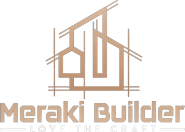Renovating an entire home can feel overwhelming, but breaking the project into manageable phases helps reduce stress, minimize disruption, and allow for smarter budgeting. A phased renovation allows you to prioritize key areas and work around your lifestyle, all while ensuring the project stays on track. Here’s how to plan your whole-home renovation in phases.
1. Assess and Prioritize: Starting with a Solid Plan
Before you dive into the renovation, it’s crucial to evaluate the current state of your home. Identify areas that need immediate attention, like structural repairs or outdated electrical and plumbing systems, versus areas that can wait. Create a list of must-have updates and prioritize them based on urgency and budget.
Key Steps in Phase 1:
- Complete a Home Inspection: Bring in professionals to inspect the foundation, roof, plumbing, and electrical systems. Make sure no issues will disrupt your renovation.
- Set Your Budget: Determine how much you’re willing to spend, keeping in mind that the unexpected may arise.
- Make a Priority List: Decide which parts of the home need to be addressed first and which can be updated later. You might want to start with functional spaces like kitchens or bathrooms before moving on to decorative changes in living rooms or bedrooms.
2. Phase 1: Structural and System Updates
The first phase of any whole-home renovation focuses on the essentials. This includes addressing the core structure and systems that impact the functionality of your home. Begin by upgrading or replacing things that may affect your quality of life, like plumbing, electrical systems, or HVAC.
What to Focus on in Phase 1:
- Foundation and Structural Repairs: If there are cracks or other issues in your home’s foundation, these must be addressed early.
- HVAC, Electrical, and Plumbing Systems: Ensure these essential systems are updated to meet modern standards. This might include replacing outdated pipes, installing energy-efficient HVAC units, or rewiring for increased safety.
- Structural Elements: Consider any load-bearing walls that need to be reinforced or openings for new windows and doors that will affect the layout.
3. Phase 2: Interior Demolition and Layout Changes
Once the structural integrity of your home is secure, it’s time to focus on the interior layout. This phase can include demolition of old walls, flooring, or ceilings, along with any significant changes to your home’s layout. Whether you’re knocking down walls for an open-concept space or reconfiguring a kitchen, this phase is key to creating a modern, functional design.
What to Do in Phase 2:
- Demolition: Remove old flooring, outdated cabinetry, and walls that will be reconfigured.
- New Layout Planning: If your home needs layout changes (e.g., opening up a room or rearranging walls), this is the time to make those adjustments.
- Prepare for New Systems: If you’re adding new features like a fireplace, built-ins, or an island in the kitchen, now’s the time to install those elements.
4. Phase 3: Refining the Details (Kitchen, Bathrooms, and Other Key Spaces)
Now that the core structure is solid, it’s time to turn attention to high-traffic areas that require both function and style: the kitchen and bathrooms. These spaces tend to be the heart of the home, so investing in quality finishes and making sure everything works seamlessly is a top priority.
What to Address in Phase 3:
- Kitchen Renovation: Update cabinets, countertops, and appliances. This is typically a major undertaking, so plan for extra time to choose materials, appliances, and layout.
- Bathrooms: Upgrade fixtures, flooring, and tiles. This phase can also include adding a new bath or shower to enhance the overall functionality of your home.
- Utility and Storage Spaces: Don’t overlook spaces like laundry rooms, mudrooms, and closets. Renovating these areas early on can greatly improve your home’s daily function.
5. Phase 4: Interior Finishes and Decoration
With your home structurally sound and key functional spaces renovated, it’s time to focus on the aesthetic appeal. This includes painting, flooring, lighting fixtures, and installing decorative features. During this phase, the finishing touches come together to transform your home into the space you’ve envisioned.
What to Focus on in Phase 4:
- Painting and Wall Treatments: Choose your color palette and finish your walls with a fresh coat of paint.
- Lighting and Fixtures: Install your chosen light fixtures, from chandeliers to sconces. This adds both function and visual interest.
- Flooring: Lay new hardwood, tile, or carpeting to match your style and finish off the room.
6. Phase 5: Landscaping and Exterior Improvements
The final phase of your whole-home renovation involves the exterior and landscaping. Improving the curb appeal and outdoor living spaces can significantly boost your home’s overall look and feel. Whether you’re adding a deck, garden, or new siding, this phase will help bring the entire renovation together.
What to Do in Phase 5:
- Landscaping: Create a welcoming entry with new plants, outdoor lighting, and a well-designed lawn or garden.
- Exterior Updates: Install new siding, windows, or roofing if needed to improve your home’s energy efficiency and aesthetic appeal.
- Outdoor Spaces: Enhance outdoor living areas with patios, decks, or pergolas to create enjoyable, functional spaces for entertaining.
7. Stick to Your Timeline and Budget
Throughout all phases of the renovation, it’s essential to stay on schedule and within your budget. While it’s tempting to make changes or add extra features, sticking to your initial plan will help ensure the project doesn’t spiral out of control.
Tips for Staying on Track:
- Create a Detailed Timeline: Break down each phase into specific tasks and set realistic deadlines.
- Track Costs: Regularly monitor spending to avoid budget overruns. Allocate extra funds for unexpected expenses.
- Hire the Right Professionals: Skilled contractors and designers will help keep the project moving smoothly and ensure quality work at every phase.
Final Thoughts
A whole-home renovation in phases allows you to make significant improvements while minimizing disruption and spreading out the financial burden. By starting with the essentials, followed by structural changes, key space updates, and finishes, you can ensure a seamless renovation experience. Planning ahead and being flexible with your approach will ultimately result in a home that meets both your needs and your design dreams.








